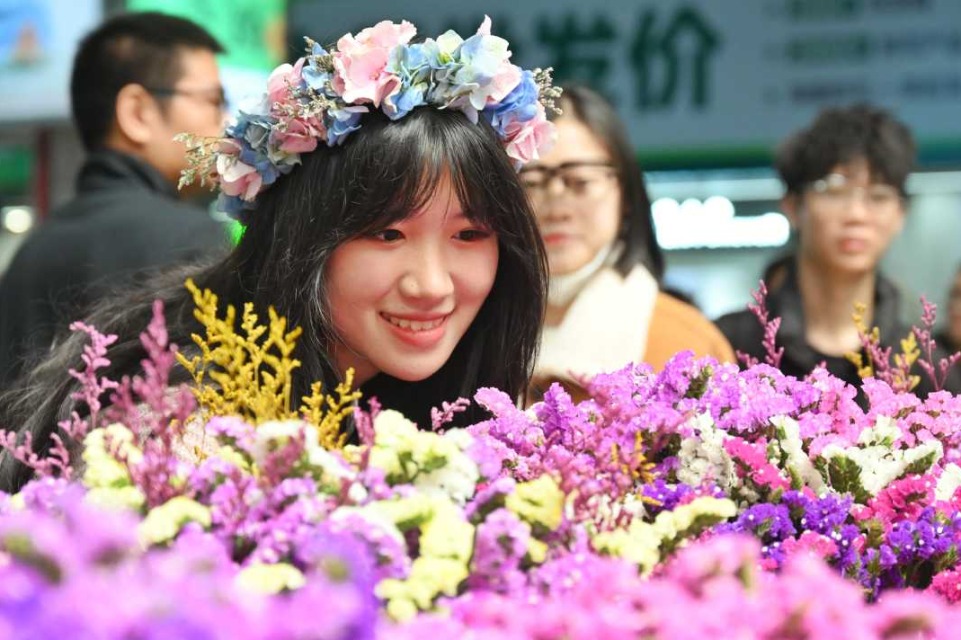China-Russia bilateral cooperation ties, a model for the world

As each other's largest neighbor, China and Russia have established a model of friendly exchanges and win-win cooperation that have withstood the tests of international challenges, according to a senior Chinese government official.
In a recent interview with Russia Today, Zhang Hanhui, China's ambassador to Russia, noted China has been Russia's largest trading partner for 14 consecutive years, while Russia has become China's eighth-largest trading partner.
"Our economic strengths complement each other, showing resilience and potential for cooperation," said Zhang. "This is evident in the substantial increase in trade volume, optimized trade structure and successful implementation of major projects in sectors such as energy, chemicals, aerospace and connectivity, alongside a surge in business and local delegation exchanges."
According to China's General Administration of Customs, in 2023, China-Russia bilateral trade reached $240.1 billion — a 26.3 percent year-on-year increase. From January to September, trade amounted to more than $180.35 billion, with China's exports to Russia at $83.15 billion, up 2.4 percent, and imports from Russia at $97.21 billion, up 1.7 percent.
Zhang stated both sides will continue to leverage their advantages and steadily advance cooperation in traditional fields such as energy, aerospace, tourism, education and agriculture, while tapping into new areas such as technological innovation, automotive manufacturing, artificial intelligence and green development to elevate bilateral economic and trade cooperation.
The Tongjiang-Nizhneleninskoye railway bridge, the first cross-border railway bridge over the Heilong River, is a major achievement in the infrastructure development within the framework of the Belt and Road Initiative. Connecting Russia's Jewish Autonomous Oblast and China's Heilongjiang province, the bridge has transported more than 6 million metric tons of goods since opening in November 2022, with 2.2 million tons transported from January to May this year — 2.3 times the volume of the same period of 2023.
Spanning about 6.73 kilometers with a main span of more than 2.21 km, the Tongjiang-Nizhneleninskoye project is China's second transnational bridge, after the Yalu River Bridge. It marks a new era of infrastructure connectivity in the China-Russia strategic partnership, contributing significantly to the vitalization of Northeast China and the development of Russia's Far East.
Energy cooperation is another crucial component of the China-Russia strategic partnership. At a recent seminar hosted by the National Academy of Development and Strategy of Renmin University of China, Sergei Popov, a senior researcher at the Melentiev Energy Systems Institute of the Siberian Branch of the Russian Academy of Sciences, highlighted the establishment of energy cooperation mechanisms in the 1990s between the two countries. These have since expanded to include cross-border pipelines and energy exports to China.
Popov noted potential collaboration in the Yamal liquefied natural gas project and continental shelf development in the Sea of Okhotsk, and that renewable energy presents another promising field for cooperation, alongside coal and nuclear technology development.
With this year marking the start of the China-Russia Years of Culture, a wide range of activities are planned to expand cooperation in performing arts, cultural heritage protection and restoration, joint archaeology, and professional talent development, further strengthening local and youth cultural exchanges.
A series of events have been held, including a reception hosted by the Chinese People's Association for Friendship with Foreign Countries to celebrate the 75th anniversary of diplomatic relations, and a concert in Russia performed by China's National Centre for the Performing Arts. Plans are underway for a youth forum, a commemorative video by Chinese and Russian astronauts, and a photography exhibition.
Ambassador Zhang noted both countries are rich in cultural heritage and have a long history of cultural cooperation and solid foundations for exchanges. Currently, more than 200 Russian universities offer Chinese language courses, with around 90,000 students learning Chinese.
Zhang added that diverse cultural activities such as festivals, films, forums, art fairs and exhibitions have elevated exchanges and cooperation to unprecedented levels, fostering mutual understanding between the Chinese and Russian peoples and solidifying the social foundation of their enduring friendship.
Today's Top News
- Visa-free transit policy boosting foreign visits
- Smart service robots in spotlight at Canton Fair
- Xi arrives in Kuala Lumpur for state visit to Malaysia
- Xi calls for deepening China-Malaysia friendship in signed article
- Rip-off claims hoodwinking of US public: China Daily editorial
- Twin trade events show China will not close its doors in face of tariff attack: China Daily editorial






























